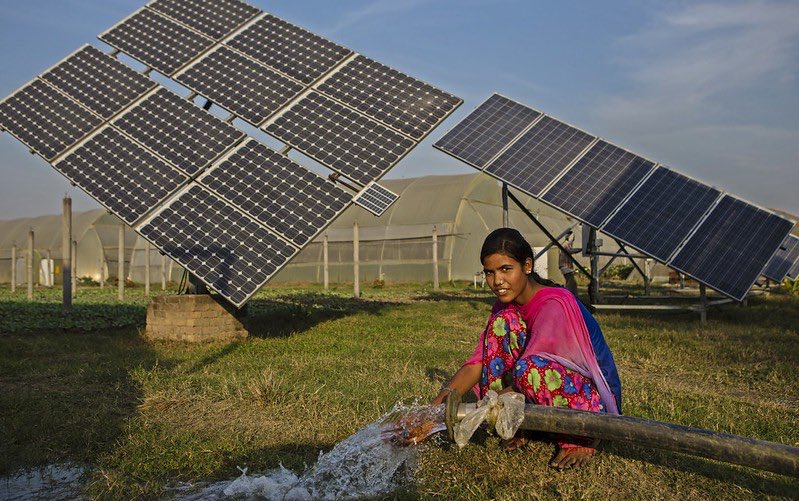One of the great examples that economists give on the power of incentives in Econ 101 is this: Towards the end of the 18th century, England began sending convicts to Australia. The government-funded transportation was privately provided. A lot of convicts died along the way from disease, poor nutrition and lack of medical care. Between 1790 and 1792, 12% died. On one ship, 37% perished. Then the government changed the incentives. It decided to pay the captains a bonus for each convict that walked off the boat in Australia alive. In 1793, under the new incentives, a single convict died out of 322 transported; an amazing outcome.
Valentine’s Day for agriculture comes two weeks early. Feb. 1 is the day, when irrespective of political orientation, agriculture is the focal point. India’s Budget 2020 was no different, with Finance Minister Nirmala Sitharaman announcing a 16-point agenda for agriculture. The oft-repeated discourse on the budget is that the devil is in the details—in this case, implementation. We ask a slightly different question: What incentives are provided in implementation itself?
Whether it is a solar power proposal, building a national cold chain (Kisan Rail), improving aviation links in the value chain (Krishi Udan), or introducing viability gap funding in warehousing, will the implementation systems and protocols generate the right incentives? This would determine if we want to celebrate or prepare for a post-mortem again a year or two from now, like what has happened to the much-hyped e-NAM electronic agricultural market.
In the minister’s marathon budget speech (except twice while asking states to adopt model laws and in reducing chemical fertilizer use) the word “incentive” was absent. While the plans for the 16-point agenda are ambitious and to an extent earnest, it does not clearly weigh in on the core problem of incentives. If warehousing, for example, were to be promoted through viability gap funding without the right incentives, it would be prone to negative selection—the clever ones would move in to avail themselves of funds and create systems rendered precisely unviable after a short while. As the National Bank for Agriculture and Rural Development
(NABARD) will map and geotag the warehouses, to foster in the right incentives, it should also bring in a monitoring system and outcomes-linked funding. Or else, there would effectively be gold plating to avail of the funds on the anvil, like in the case of retention pricing in fertilizer subsidies, where inefficiency would be remunerated.
The details on the PM KUSUM solar energy scheme, once out, would mark out the incentives. Often solar power systems have very large subsidies, and this can lead to perverse incentives. From the point of view of incentives, it is not clear what the deal is with the barren land clause.
Something similar has happened with Farmer Producer Organisations—where promotion was conceived around viability gap funding or rather along the paradigm of infant industry protection. Promoters like NABARD would provide seed funds to help FPOs in the beginning. Our research finds stark differences in performance between the FPOs that were promoted vs. those that evolved organically through farmer collaboration. Incidentally, the budget also underlines the role of FPOs as the vehicle for improving farm outcomes and allocated $70 million. It proposes to form 500 fish FPOs. Notwithstanding the discourse around FPOs for creating opportunities for small and marginal farmers, the subpar performance in terms of outcomes and lifespan is partly reflected in being a function of negative selection at different levels. Most FPOs have not delivered in terms of product differentiation that can create value and give market power to farmers, increase farmer’s share in value and reduce risks. With no accountability in place for the FPOs to perform, closure or suboptimal farmer outcomes have become the norm. This is an ailment even in the much-hyped “Clean India campaign.” With no fines levied, the propensity for Indians not to behave duly in the civic space remain as ever.
Targeting markets by way of Kisan Rail or Krishi Udan is indeed a welcome recognition that the central problem in agriculture is that we have not got the markets right. Yet, for markets to work and getting the incentives right requires the backend to work as well. How would consumers trust food coming from miles away and pay for it unless they are sure that it has been produced properly without risks to health and wellness? The incentives are misaligned, without a credible system of grading and certification. Similarly, what systems will be in place ensuring that the transporters do the due diligence? Estimates show that a 1-degree higher temperature in cold chains can bring in substantial saving in energy costs. Many incentives exist to tinker with temperature and save on costs. Kisan Rail as a concept is not new. Earlier, the banana train was started from Jalgaon, Maharashtra, to different mandis (Azadpur Mandi of Delhi). The horticulture train had to be suspended in 2016. The agents responsible for handling the loading of bananas did not have the right incentive to load bananas promptly and save them from damage. This spoiled consignment and did not lead to better price discovery. Similarly, e-NAM had limited uptake from buyers and sellers, as its platform has no built-in incentive to create and distribute value. It lacks in scientific sorting/grading facilities, including quality testing machines that lead to product differentiation and bring in trust and willingness to pay. Et tu, incentives?
Sunil Saroj is an IFPRI Research Analyst; Devesh Roy is a Senior Research Fellow with the IFPRI-led CGIAR Research on Agriculture for Nutrition and Health (A4NH); they are based in IFPRI’s South Asia Regional Office in New Delhi. Mamata Pradhan is an Associate Research Fellow with the Tata Cornell Institute. This post first appeared in the Financial Express. Opinions are the authors’.







